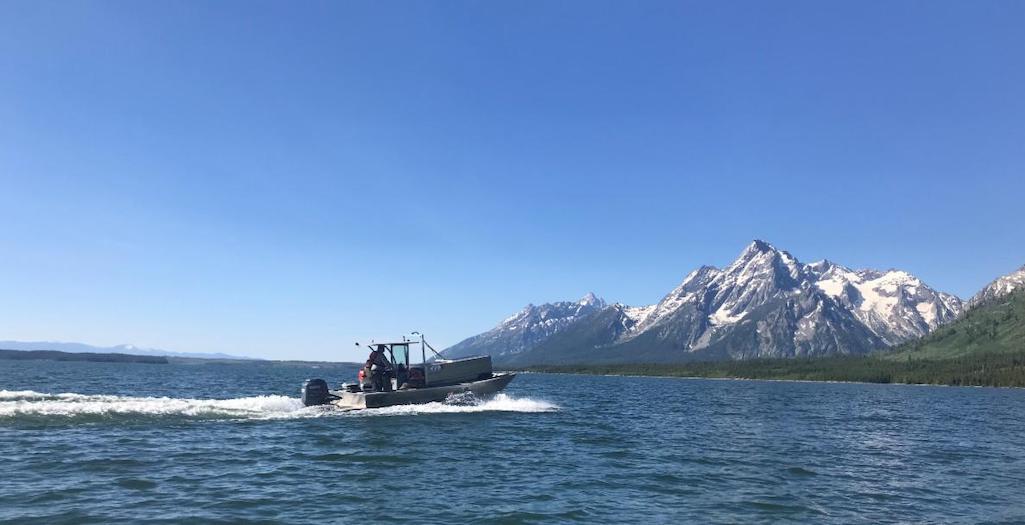
A young grizzly bear was relocated across Jackson Lake in Grand Teton National Park after obtaining human food/NPS
A young grizzly bear was given a boat ride and a visitor to Grand Teton National Park received a citation after the bear was able to obtain human food, and rangers were investigating claims the bear was even fed by visitors in a vehicle.
“Feeding wildlife is illegal and dangerous, and we take these incidents very seriously," said Grand Teton Superintendent Chip Jenkins. "The impacts of irresponsible behavior can have very negative effects for humans and wildlife.”
On June 11, a visitor reported that a grizzly bear walked through a Grassy Lake Road campsite on the northern end of the park, sniffed a picnic table and unoccupied tent, and put its paws on the tent. No damage was done to the tent. Visitors yelled at the bear and the bear ran away. On June 12, Teton Interagency Dispatch Center received a report of visitors feeding a grizzly bear from a vehicle south of Lizard Creek Campground, also near the park's northern end. On June 13, Teton Interagency Dispatch Center received a report of a grizzly bear gaining access to unattended trash and a drink at a campsite located on the outer loop of the Headwaters Campground.
All reports and evidence indicated that the same grizzly bear was involved with each incident, a park releaser said. Late on June 13 park staff captured the grizzly bear along the Grassy Lake Road. On June 14, the bear was collared and biological samples were collected. The bear is a young male that is approximately 2.5 years old. The bear was relocated early Tuesday morning, June 15, via boat to the west side of Jackson Lake.
A food storage violation citation with a mandatory court appearance was issued to the individual that had the unattended trash and drink. The reported feeding of the bear from a vehicle is under investigation.
Every visitor who comes to Grand Teton has the unique opportunity to view bears in their natural habitat. With that opportunity comes the responsibility to protect themselves and the bears. It is up to everyone to keep bears wild.
Bears that obtain human food may lose their natural fear of humans and may seek out humans and human developed areas as an easy source of food. As a result, bear may become aggressive towards people and have to be killed.
The proper storage of food items and responsible picnicking are vitally important in bear country. Picnickers should only have immediate use items out so that if a bear approaches, food items can be quickly gathered and the opportunity for the bear to receive a food reward is removed. Visitors should store food and scented items in bear-resistant food lockers that are located throughout the park or in a hard-sided vehicle. Deposit trash in bar-resistant receptacles and do not burn waste in fire rings or leave litter in campsites.
Park staff ask that you report bear activity along roadways and in developed areas and human-bear interactions to a nearby park ranger or visitor center. Park visitors should follow regulations related to human and wildlife safety. For more information, visit Safety in Bear Country - Grand Teton National Park (U.S. National Park Service).



Comments
Humans are such a disappointment.
People are just PLAIN stupid!!
Thank you Rangers for the work you do! Thank you for keeping us safe and managing the humans that practice unsafe camping!
Some people. Actually, unfortuately, a majority.
Please prosecute the humans involved
to the fullest extent of the law!